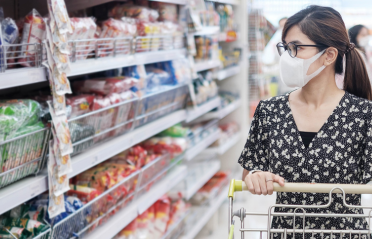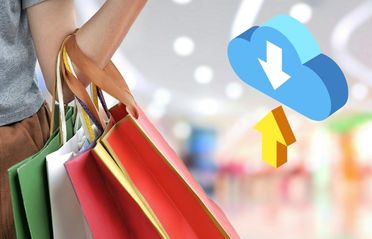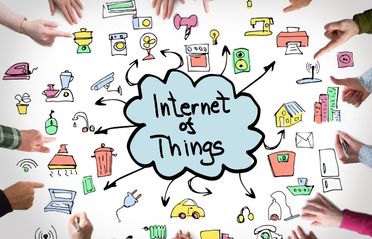Overview
Location based services have become an intrinsic part of our day-to-day lives. We immediately reach out to Google Maps to find the optimum route for our journeys. We use apps like Accuweather to plan outdoor events based on the local weather conditions.
And not just that, location-based services play a huge role in ensuring personal safety. To inform others of our safety, we use features such as “Marked as Safe” option on Facebook. One can also track lost mobile phones using the location data.
In this blog, we will understand the technology that powers Location Based Services and delve through some of its most common use cases.
What is a Location Based Service?
Location-based services help provide real-time information to individuals based on their geographic location. They achieve this through a combination of geospatial technologies, communication technologies, and the Internet.
Location-Based Service (LBS) refers to an IT service as opposed to traditional service offerings of companies. The services are further categorized into two main categories:
Push:
In this case, the application initiates the location-based service by presenting the user/device with the relevant information based on their real-time location. For instance, when users are near a specific retail outlet, they get an advertisement or coupon because of proximity marketing.
Pull:
In this case users initiate the location-based service by querying for specific information based on their current location. An example of this is when we query for the “petrol/gas stations” en route while using Google Maps.
Components of a Location Based Service
A location-based service (LBS) consists of 3 major components. They are as follows:
Localization:
This is synonymous with positioning technology. These include GPS satellites or combinations of multiple positioning technologies and reference systems, mapping input signals to formalized positions. For instance, reference systems can include 2D-maps (e.g. building plan), 3D-maps (e.g. virtual model of a shop floor).
Service Provision:
This is comprised of the IT service providers’ software application and the geo-specific information provided to end-users by content providers.
Communication:
In order to enable communication, the LBS requires an adequate communication network (such as LTE or Wi-Fi). These transmit data and requests for service and a user interface that could be the end user’s mobile device.
It is legally binding that location-based services must be permission-based. In other words, the end-user must opt-in to the service to use it. This is achieved by installing the LBS application and allowing the service to know the consumers’ device’s location.
Popular Use Cases of Outdoor Location Based Services
The proliferation of mobile phones, internet penetration, accessibility of GPS and similar satellite-based positioning, and extensive availability of mobile phone services has contributed to the widespread use of location-based services in the B2C sector. Here are some of the popular use-cases of Outdoor Location Based Services:
Navigation & Travel Information:
One of the most popular use cases of Location based services are the Navigation apps. GoogleMaps has the highest brand recall in this category. These applications help users find the best possible routes and deliver real traffic data notifications and weather reports. This enables the users to plan their travel accordingly.
While these are mostly outdoor applications, they have indoor use cases as well. Wayfinding apps can help with indoor navigation when used in a large premises like malls, hospitals or university campuses.
Store & Service Locators:
Extrapolating on the navigation use case, location-based intelligence can further benefit retail customers to quickly find the nearest service location. For example, a customer can use a retailer’s app to visit the “store location” and find the nearest store locally.
With lines blurring between digital and physical retail, these apps can also be used by brick-and-mortar stores with eCommerce functionality. They can encourage customers to buy online and pickup their order from a physical store. These can also be used by ecommerce players with brands tie-ups, allowing customers to pickup from their nearest outlet.
Proximity-based Marketing:
Building upon the store and service locator use-case, retailers can further use geo-location data. They can understand the customers’ store preferences to deliver personalized offers based on their vicinity.
This is known as proximity marketing. Instead of casting a wider net, they can allocate their marketing budget on customers most likely to purchase.
Sometimes geofencing (also a location-based service) can be used to send/trigger messages with promotional offers/contextual recommendations. This is used when a mobile device with the app installed is entering, exiting, or parked in a defined location. For instance, you get a promotional message from your favourite coffee shop when you are in proximity of the shop.
Fleet Tracking & Mobile Workforce Management:
Location tracking has helped players in logistics and logistics-dependant industries keep track of shipments and employees at designated locations. For instance, food delivery apps inform customers when their order has been received, packed, dispatched, and delivery ETA. The data is received from employees checking in their location, and then relayed to customers in real-time.
Asset tracking and theft prevention:
Asset tracking is crucial in industrial scenarios where goods and merchandise are tracked using RFID or beacons. These devices continually send their identification to a server via controllers.
The location data is interpreted by server-side software which sends the location of all the assets on a map. This helps in accuracy of tracking, forecasting, and theft prevention through recording and surveillance.
Roadside Assistance:
The growth of roadside assistance (RSA) companies is fuelled by a significant rise in number of accidents happening on the road.
These companies provide an app that allows them to track the users’ exact location so that they do not have the added hassle to give directions to reach them in case an unfortunate event happens. Location-based services enable faster responses, higher call processing, efficient routing to better assist customers in their time of need.
Fraud Prevention:
Geolocation frauds occur when criminals try to fabricate their location information by using the victim GPS and IP address information. Location-based services can create an added security layer by matching a customer’s location to a credit card transaction. This allows suspicious transactions made across several geographical locations to be flagged, thereby preventing the fraud from happening.
Social networks, messengers & dating apps:
Social networking apps have been built on the premise of the location to reunite old friends or make new friends. Whatsapp, a popular messaging app has a feature of sharing real-time geo-location to help people find each other.
Similarly, dating apps use location to enable people with common interests and common locations to come together. Extrapolating on this principle, location-based professional networks can be built to empower professional connections and build community job boards.
Augmented Reality & Games:
In 2016, Pokemon Go created quite a stir when it combined location-based service and augmented reality into an enthralling game. This combination allowed people to take part in specific events based on their location. Though it had to be delisted due to restrictions imposed by various governments, it was another showcase of location-based services.
Market for Location Based Services:
As published in a research conducted by Meticulous Research, the location-based services market is expected to grow at a CAGR of 15.2% from 2022 to 2029 to reach $239.7 billion by 2029. While COVID-19 dampened the market performance for a short stint the demand for these services is on the rise as they find application in different sectors such as retail, logistics, pharmaceuticals, hospitality and automotive. New entrants providing cutting-edge technology solutions (& services) in this space are utilizing the COVID 19 period to capitalize on the market once it opens by initiating new product launches, enhancements to existing products, forging partnerships, and collaborations. As customers look for a more personalized experience, location-based service will be the very foundation of building apps that will enhance customer satisfaction.

Product Engineering Services Customized software development services for diverse domains
Quality Assurance End-to-end quality assurance and testing services
Managed Services Achieve scalability, operational efficiency and business continuity
Technology Consulting & Architecture Leverage the extensive knowledge of our Domain Experts



